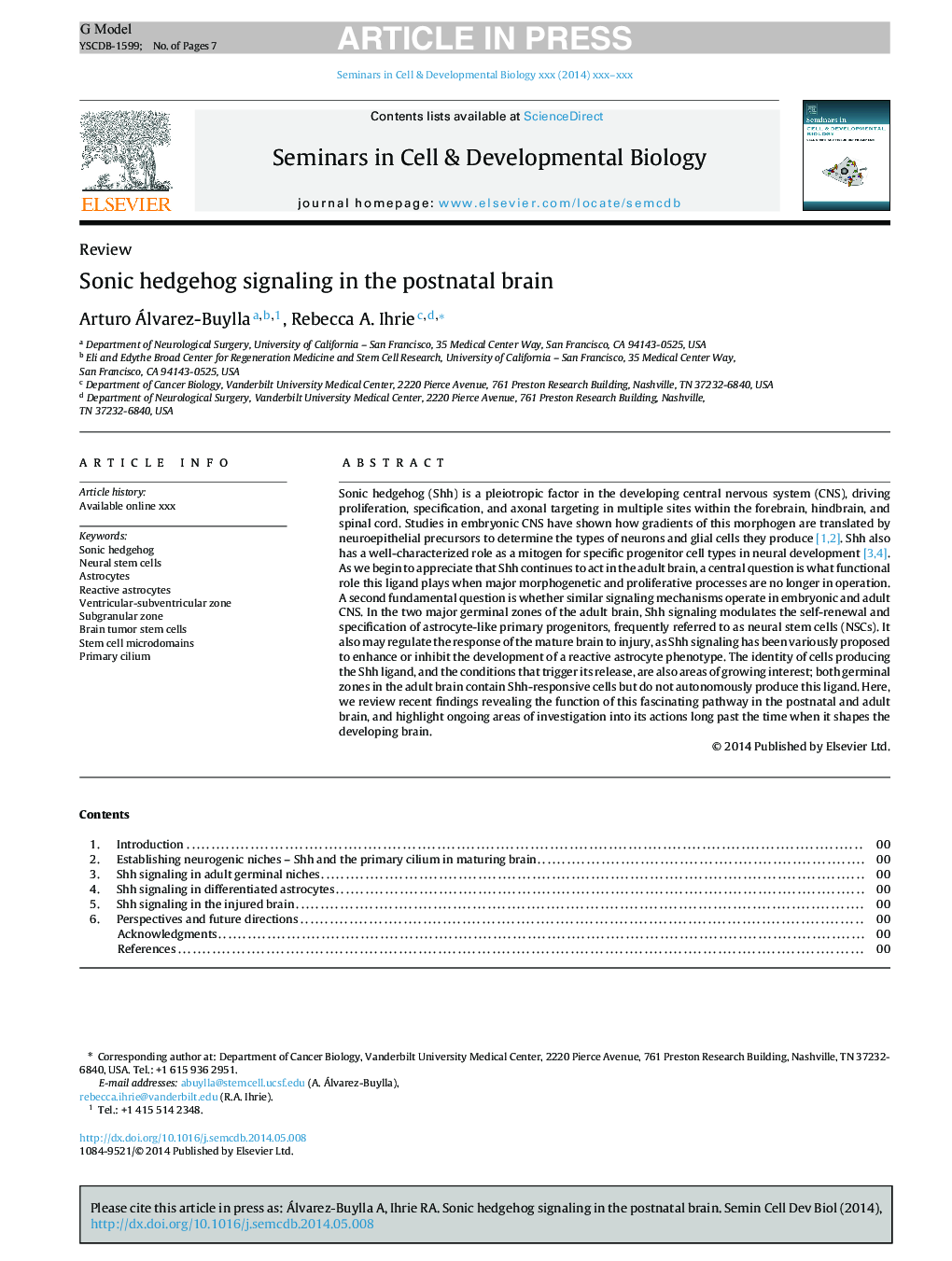| کد مقاله | کد نشریه | سال انتشار | مقاله انگلیسی | نسخه تمام متن |
|---|---|---|---|---|
| 8480652 | 1551389 | 2014 | 7 صفحه PDF | دانلود رایگان |
عنوان انگلیسی مقاله ISI
Sonic hedgehog signaling in the postnatal brain
ترجمه فارسی عنوان
صدای جیر سیگنالینگ در مغز پس از تولد
دانلود مقاله + سفارش ترجمه
دانلود مقاله ISI انگلیسی
رایگان برای ایرانیان
کلمات کلیدی
موضوعات مرتبط
علوم زیستی و بیوفناوری
بیوشیمی، ژنتیک و زیست شناسی مولکولی
بیولوژی سلول
چکیده انگلیسی
Sonic hedgehog (Shh) is a pleiotropic factor in the developing central nervous system (CNS), driving proliferation, specification, and axonal targeting in multiple sites within the forebrain, hindbrain, and spinal cord. Studies in embryonic CNS have shown how gradients of this morphogen are translated by neuroepithelial precursors to determine the types of neurons and glial cells they produce [1], [2]. Shh also has a well-characterized role as a mitogen for specific progenitor cell types in neural development [3], [4]. As we begin to appreciate that Shh continues to act in the adult brain, a central question is what functional role this ligand plays when major morphogenetic and proliferative processes are no longer in operation. A second fundamental question is whether similar signaling mechanisms operate in embryonic and adult CNS. In the two major germinal zones of the adult brain, Shh signaling modulates the self-renewal and specification of astrocyte-like primary progenitors, frequently referred to as neural stem cells (NSCs). It also may regulate the response of the mature brain to injury, as Shh signaling has been variously proposed to enhance or inhibit the development of a reactive astrocyte phenotype. The identity of cells producing the Shh ligand, and the conditions that trigger its release, are also areas of growing interest; both germinal zones in the adult brain contain Shh-responsive cells but do not autonomously produce this ligand. Here, we review recent findings revealing the function of this fascinating pathway in the postnatal and adult brain, and highlight ongoing areas of investigation into its actions long past the time when it shapes the developing brain.
ناشر
Database: Elsevier - ScienceDirect (ساینس دایرکت)
Journal: Seminars in Cell & Developmental Biology - Volume 33, September 2014, Pages 105-111
Journal: Seminars in Cell & Developmental Biology - Volume 33, September 2014, Pages 105-111
نویسندگان
Arturo Álvarez-Buylla, Rebecca A. Ihrie,
